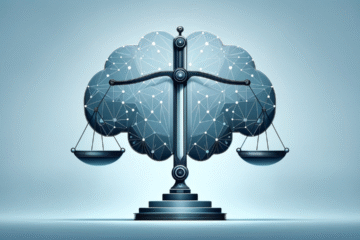
This article is written by Samriddha Ray of 3rd Year of St. Xavier’s University, Kolkata, an intern under Legal Vidhiya
Abstract
Public Interest Litigations (PILs) have played a transformative role in Indian constitutional jurisprudence, often catalysing social reforms in areas traditionally governed by personal laws. This article critically analyses how PILs have been used to question, challenge, and occasionally reform personal laws relating to religion, marriage, inheritance, and gender justice. While PILs have empowered marginalized voices and advanced constitutional morality, their use in the domain of personal laws raises complex questions about judicial activism, secularism, and the limits of constitutional adjudication. The paper examines landmark cases, doctrinal tensions, and suggests a balanced path for harmonizing constitutional values with respect for cultural and religious diversity.
Introduction
India’s legal framework is an intricate mosaic where secular constitutional principles coexist with diverse personal laws rooted in religious traditions. Over the years, PILs have not only addressed environmental concerns and administrative malfeasance but have also ventured into the domain of personal law reform—a domain once considered sacrosanct and beyond the pale of judicial scrutiny.
This engagement of PILs with personal laws raises foundational questions: Should courts intervene in religious personal laws to advance constitutional ideals? Does such intervention violate the secular ethos or reinforce it? And what role should PILs play in balancing individual rights with group rights? Through doctrinal analysis and landmark judgments, this article explores these questions.
PILs in India: Concept and Evolution
Public Interest Litigation, as conceptualised by the Supreme Court in the late 1970s and early 1980s, was meant to be a tool for social transformation. In S.P. Gupta v. Union of India, the Court liberalised the rules of locus standi, allowing any public-spirited citizen to approach the court on behalf of those unable to do so themselves. ¹ [1]This shifted the judiciary’s role from a mere dispute resolver to an agent of social justice.
Initially, PILs were focused on issues like bonded labour, prison reforms, and environmental degradation. Over time, however, PILs began to challenge constitutional validity of religious personal laws, seeking harmonisation with constitutional values like equality, dignity, and non-discrimination.
Personal Laws in India: An Overview
They are rooted in religious traditions: Hindu law (codified through the Hindu Marriage Act, 1955; Hindu Succession Act, 1956, etc.), Muslim personal law (partially codified, largely derived from Shariat), Christian and Parsi laws, and the secular Special Marriage Act, 1954.
Article 25 of the Indian Constitution guarantees freedom of conscience and the right to freely profess, practice, and propagate religion, subject to public order, morality, and health. This tension between individual rights under Part III and religious autonomy has been a recurrent theme in litigation.
Judicial Intervention and Personal Law Reform through PILs
1. Shah Bano Case: Maintenance and Gender Justice
Mohd. Ahmed Khan v. Shah Bano Begum (1985) [2] is perhaps the earliest and most impactful PIL-related intervention into Muslim personal law.
Shah Bano, a 62-year-old Muslim woman, sought maintenance from her husband under Section 125 of the Criminal Procedure Code after he divorced her. The Supreme Court ruled in her favour, holding that this secular provision applied to all citizens, regardless of religion. The judgment sparked debate by suggesting the need for a Uniform Civil Code to ensure equality and justice. Though technically not filed as a PIL, the case had the broader spirit of PIL as it addressed systemic gender injustice faced by Muslim women.
It set the stage for later PILs challenging personal laws on grounds of constitutional rights and gender equality.
2. Danial Latifi Case: Harmonising Law with Constitutional Values
In Danial Latifi v. Union of India (2001),[3] the constitutional validity of the 1986 Act was challenged. The Supreme Court upheld the Act but interpreted it in a manner consistent with constitutional mandates, ensuring divorced Muslim women were entitled to reasonable and fair provision for the future. This interpretive approach demonstrated judicial restraint while aligning personal law with constitutional values.
3. Triple Talaq: Shayara Bano v. Union of India
In Shayara Bano v. Union of India (2017), [4] the practice of instantaneous triple talaq (talaq-e-biddat) was challenged through a PIL. The Supreme Court, by a 3:2 majority, declared the practice unconstitutional, citing arbitrariness and violation of Article 14. The judgment reaffirmed that personal laws could be tested against constitutional standards of equality.
The ruling led to the enactment of the Muslim Women (Protection of Rights on Marriage) Act, 2019, criminalising triple talaq. Critics viewed this as state interference, while supporters celebrated it as a victory for Muslim women’s rights.
4. Sabrimala and Entry of Women: Indian Young Lawyers Association v. State of Kerala
Though not directly about personal laws, the Sabrimala Temple entry case (2018) [5]stemmed from a PIL challenging a religious practice. The Court held that the exclusion of women aged 10–50 from the Sabrimala shrine violated constitutional guarantees of equality and non-discrimination.
The judgment sparked debates about the limits of judicial review in matters of faith and customs, and is illustrative of how PILs have increasingly confronted religious practices through the lens of constitutional morality.
5. Ongoing PILs: Uniform Civil Code and Other Petitions
These PILs reflect an evolving judicial willingness to entertain challenges to personal laws that allegedly contravene fundamental rights.
Doctrinal Tensions: Personal Laws vs. Constitutional Morality
Article 13 and “Laws in Force”
A key debate is whether personal laws fall within the definition of “laws in force” under Article 13 and are thus subject to fundamental rights. In [6]State of Bombay v. Narasu Appa Mali (1952), ⁸ the Bombay High Court held that personal laws are not “laws in force” and hence immune from constitutional scrutiny.
This judgment has been criticised by scholars and is increasingly questioned in recent PILs. The Supreme Court, however, has not definitively overruled Narasu Appa Mali, leading to doctrinal ambiguity.
Constitutional Morality vs. Popular Morality
Judgments like [7]Navtej Singh Johar v. Union of India (2018) ⁹ and Sabrimala have invoked the concept of constitutional morality to strike down discriminatory practices, even if rooted in religious or social customs. Critics argue this risks judicial overreach into legislative and cultural domains.
Critical Analysis: Merits and Concerns
Merits
- Empowerment of marginalized groups: PILs have enabled Muslim women, Dalits, and other vulnerable communities to challenge discriminatory practices.
- Catalyst for legislative reform: Judicial pronouncements have often prompted Parliament to enact reforms.
- Advancing constitutional ideals: Ensures that personal laws evolve with constitutional norms of equality and dignity.
Concerns
- Judicial overreach: Critics argue that courts, through PILs, often substitute their wisdom for legislative policy.
- Secularism and pluralism: Excessive judicial intervention may undermine India’s commitment to protecting cultural and religious diversity.
- Fragmented reforms: PIL-driven reforms may lead to piecemeal changes rather than comprehensive codification.
The Way Forward
Harmonisation, Not Homogenisation
Courts should strive to harmonise personal laws with constitutional values rather than impose uniformity. Interpretation, rather than invalidation, can ensure gradual evolution.
Role of Legislature
Comprehensive reforms are better achieved through parliamentary debate and law-making, reflecting diverse social viewpoints.
Revisiting Narasu Appa Mali
The Supreme Court may need to revisit Narasu Appa Mali to clarify the extent to which personal laws are subject to constitutional scrutiny.
Strengthening Consultative Processes
Before adjudicating on matters of faith, courts may consider involving diverse stakeholders to ensure sensitive and informed judgments.
Conclusion
PILs have undeniably played a pivotal role in personal law reform in India, championing gender justice and constitutional values. Yet, the exercise of judicial power in this delicate sphere must remain guided by prudence, constitutional boundaries, and respect for pluralism. A balanced approach—anchored in constitutional morality but conscious of India’s social diversity—offers the most sustainable path for reform.
Personal law reform must ultimately emerge from dialogue: between courts, legislature, civil society, and the communities whose lives are most affected. PILs can initiate this dialogue but should avoid being the sole driver of change.
References
- S.P. Gupta v. Union of India, (1981) Supp SCC 87.
- Mohd. Ahmed Khan v. Shah Bano Begum, (1985) 2 SCC 556.
- Danial Latifi v. Union of India, (2001) 7 SCC 740.
- Shayara Bano v. Union of India, (2017) 9 SCC 1.
- Indian Young Lawyers Association v. State of Kerala, (2018) 10 SCC 1.
- State of Bombay v. Narasu Appa Mali, AIR 1952 Bom 84.
- Navtej Singh Johar v. Union of India, (2018) 10 SCC 1.
- Ashwini Kumar Upadhyay v. Union of India, W.P. (C) No. 288/2017.
- Shayara Bano & Ors v. Union of India, W.P. (C) No. 118/2016.
[1] S.P. Gupta v. Union of India, (1981) Supp SCC 87.
[2] Mohd. Ahmed Khan v. Shah Bano Begum, (1985) 2 SCC 556.
[3] Danial Latifi v. Union of India, (2001) 7 SCC 740.
[4] Shayara Bano v. Union of India, (2017) 9 SCC 1.
[5] Indian Young Lawyers Association v. State of Kerala, (2018) 10 SCC 1.
[6] State of Bombay v. Narasu Appa Mali, AIR 1952 Bom 84.
[7] Navtej Singh Johar v. Union of India, (2018) 10 SCC 1.
Disclaimer: The materials provided herein are intended solely for informational purposes. Accessing or using the site or the materials does not establish an attorney-client relationship. The information presented on this site is not to be construed as legal or professional advice, and it should not be relied upon for such purposes or used as a substitute for advice from a licensed attorney in your state. Additionally, the viewpoint presented by the author is personal.




0 Comments